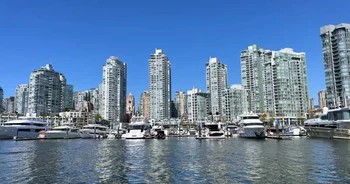New Brunswick: Who Should Immigrate to This Canadian Province and Why

Pros and cons of New Brunswick: job market, salaries, taxes, prices, social support from the local government, and ways to immigrate to the province.
In this article, we'll cover the following topics:
- geographical location;
- climate;
- where to live;
- crime;
- education;
- work and wages;
- prices and taxes;
- healthcare;
- population;
- what to see;
- immigration programs.
New Brunswick is located in eastern Canada, with much of its coastline along the Atlantic Ocean. It's considered one of the Maritime provinces, along with Nova Scotia, Prince Edward Island, and Newfoundland and Labrador. These four provinces are also known as Atlantic Canada.
New Brunswick is a relatively small and sparsely populated province (857,800 people) without grand architectural or historical landmarks. So what attracts new immigrants? First, it's incredibly beautiful. Second, the province has many hidden advantages that aren't immediately obvious.
The province's nature: forests, mountains, rivers, plains — it has it all!
Let's start by looking at the first point: New Brunswick is stunningly beautiful. Some might think this isn't very important, especially for immigrants who have other concerns when moving. But in reality, the nature and climate strongly influence all aspects of life in New Brunswick. To understand what makes this province tick, you need to know its geographic features.
Picture the Atlantic coast densely covered by evergreen forests. Forests occupy the lion's share of the territory (over 80%), though the landscape is quite diverse: the lowlands in the east gradually turn into the Caledonian Hills in the south or the Appalachian foothills in the north and center.
This picture is completed by a dense network of rivers and lakes. It's the freshwater ecosystem that has the greatest impact on the province's development. "What about the ocean?" you might reasonably ask. Indeed, New Brunswick has extensive access to the Bay of Fundy, and this proximity to the ocean makes itself felt: the coastal zone has a more humid, warm, and mild climate.
But the further from the coastline, the more continental the climate becomes. This means that in winter, temperatures drop lower, there's more snow, and less rain. The ocean's influence fades quite quickly, and the inland part of the province barely feels it.
Where it's easiest to find work in New Brunswick
All these geographic factors directly influenced the province's economic development. More precisely, they became fundamental: New Brunswick's entire economy is directly linked to and based on local resources. Therefore, jobs here can be found primarily in several areas.
Forestry
Given the amount of forest in the province, it's not surprising that the forest industry is the largest in New Brunswick. The most important segment of the industry is pulp and paper production. In some cities, especially in the north of the province, sawmills and pulp and paper mills are considered the main employers. But there are many jobs in related fields: furniture manufacturing, lumber, plywood, Christmas tree growing, etc.
Mining
On a national scale, the province ranks high in the production of antimony, bismuth, potash, peat, zinc, silver, and lead. Coal, gypsum, and sulfur are also important. Potash fertilizers and natural gas are found near Sussex.
Fishing and fish processing industry
Read more: Working as a fisherman in Canada
The main fishing areas are the Bay of Fundy, Northumberland Strait, and the Gulf of St. Lawrence.
The largest share of the catch consists of lobsters, crabs, scallops, herring, cod, mackerel, and many other North Atlantic species. Residents of the town of Shediac even erected a huge lobster monument on their territory in honor of their main source of income. The development of aquaculture has led to the emergence of fish farms producing salmon, trout, mussels, and oysters.
Tourism and hospitality
While there's no Taj Mahal, Eiffel Tower, Egyptian pyramids, or other large-scale man-made structures here, nature has given New Brunswick many other unique attractions that keep the flow of tourists to the province constant:
- The Bay of Fundy has the highest tides on Earth and is one of the most accessible places in the world for observing marine life (including whales);
- Grand Manan Island in the Fundy Islands is one of the most popular bird-watching spots in North America;
- New Brunswick has the warmest saltwater beaches in Canada;
- The "reversing falls" — one of the famous attractions of Saint John.
If your work is related to these areas, finding a job in New Brunswick shouldn't be too difficult. The province is also developing agriculture, transportation systems, and the IT industry. The province's bilingualism helps strengthen international trade ties.
You have seen 42% of the text.
This article is available only to users with Premium Access.
Want to get access to this and other Premium articles? Subscribe to Premium Access!





























